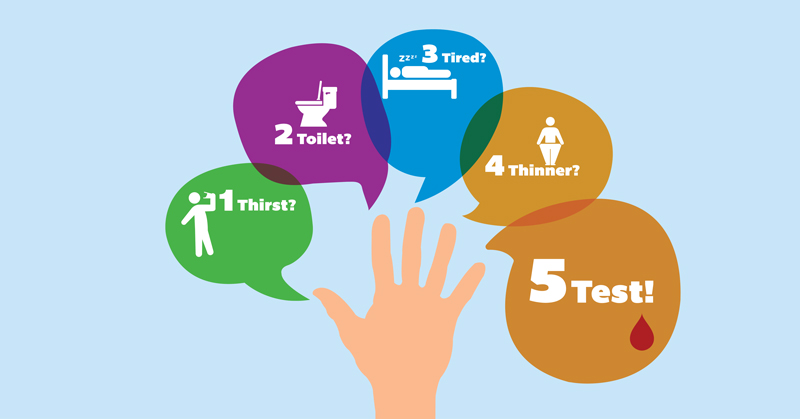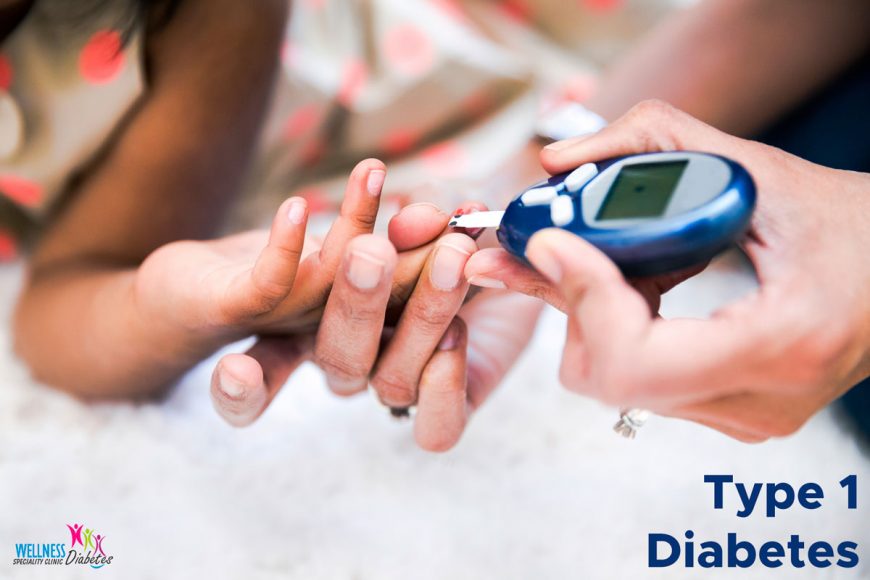What is Type 1 Diabetes?
Type 1 Diabetes also known as Juvenile Diabetes or insulin dependent Diabetes is a chronic condition in which the pancreas produces little or no insulin. The utilization of Glucose for energy in the body is regulated by the hormone ‘Insulin. Insulin is secreted by specialized cells in the Pancreas. Different factors, including genetics and some viruses, may contribute to type 1 diabetes. Although type 1 diabetes usually appears during childhood or adolescence, it can develop in adults.
Despite active research, type 1 diabetes has no cure. Treatment focuses on managing blood sugar levels with insulin, diet and lifestyle to prevent complications. Diabetes is a global epidemic with debilitating and life-threatening complications in children and adolescents. Type 1 Diabetes is most common in young children and the main stay of treatment is insulin.
Causes of Type 1 Diabetes
Type 1 is an autoimmune condition. An autoimmune condition is when your immune system, which normally keeps your body safe against disease, attacks itself instead. Other examples of autoimmune conditions include multiple sclerosis (MS) and rheumatoid arthritis. In type 1 diabetes, the immune system attacks and destroys your insulin-producing beta cells. Certain genes put people at a greater risk for developing type 1 diabetes, but are not the only factors involved. While there are no proven environmental triggers, researchers are looking for possible culprits, such as viral infections and particular molecules within our environment and foods.
Type 1 Diabetes Symptoms
- Increased thirst.
- Frequent urination.
- Bed-wetting in children who previously didn’t wet the bed during the night.
- Extreme hunger.
- Unintended weight loss.
- Irritability and other mood changes.
- Fatigue and weakness.
- Blurred vision.

Following tests may be recommended for further assessment of Type 1 diabetes
- C – Peptide
- Glutamic Acid Decarboxylase Autoantibodies (GADA or Anti-GAD)
- Insulin Autoantibodies (IAA)
- Insulinoma-Associated-2 Autoantibodies (IA-2A)
- Islet Cell Cytoplasmic Autoantibodies (ICA)
- Zinc Transporter 8 Autoantibodies (ZnT8Ab)
Common Complications include
- Kidney disease – (Nephropathy)
- Heart disease
- Stroke
- High BP
- Diabetes Nerve Disease (Neuropathy)
- Foot ulcers
- Eye Disease (Retinopathy)
- Skin Infections
- Teeth and Gum problems
Common Differences between type 1 and type 2 Diabetes
Type 1 Diabetes
- Often diagnosed in childhood
- Not associated with excess body weight
- Often associated with higher than normal ketone levels at diagnosis
- Treated with insulin injections or insulin pump
- Cannot be controlled without taking insulin
Type 2 Diabetes
- Usually diagnosed in over 30-year-olds
- Often associated with excess body weight
- Often associated with high blood pressure and/or cholesterol levels at diagnosis
- Is usually treated initially without medication or with tablets
- Sometimes possible to come off diabetes medication
Treatment of type 1 Diabetes –
1. Take Insulin as Prescribed
People who have type 1 diabetes must take insulin as part of their treatment. Because their bodies can’t make insulin anymore, they need to get the right amount to keep their blood sugar levels in a healthy range. The only way to get insulin into the body now is by injection with a needle or with an insulin pump. Insulin pills don’t work because the acids and digestive juices in the stomach and intestines would break down the medicine and make it ineffective. Different kinds of insulin are used for different purposes. The types of insulin you use and the number of shots you take each day will depend on what’s best for you and your daily schedule. As you grow and change, the amount of insulin you will need to take can change. Getting insulin injections today is nearly painless, thanks to thinner needles.
2. SGLT-2 Inhibitors Have been recently approved for use in Type 1 Diabetes
3. Pancreatic Transplant and Islet cells Transplant – In future, Pancreatic and Islet Cells transplant may be used in the treatment of Type 1 Diabetes.
4. Eat healthy and a balanced diet.
Diet should be rich in complex carbohydrates, fibre and moderate protein with low fat intake. Eating 3 small to moderate sized meals and 3 snacks (low carbohydrate, high protein) per day is recommended to distribute carbohydrate intake and to reduce post prandial glucose fluctuations.
Nutrition
Consultation with a Dietician, Carbohydrate counting, Formulation of Comprehensive meal plan and follow up of the height, weight, growth charts and BMI are the important parts of the management during childhood.
5. Check Blood Sugar levels
By keeping your blood sugar levels in a healthy range, you’ll feel better and reduce the risk that you’ll develop diabetes problems later. Testing your blood sugar level is the only way to know how you are doing with your diabetes control. Your diabetes care team may recommend that you use a continuous glucose monitor (CGM). A CGM is a wearable device that can measure blood sugar every few minutes around the clock. It’s measured by a thread-like sensor inserted under the skin and secured in place. Sensors can stay in place for about two weeks before they have to be replaced and are accurate enough to replace frequent finger-stick testing. The more frequent CGM blood sugar readings can help you and the care team does an even better job of troubleshooting and adjusting your insulin doses and diabetes management plan to improve blood sugar control. In India CGM devices like Freestyle Libre Pro by Abbott and Guardian connect CGM system by Medtronic are available.
6. Exercise regularly
All children must be encouraged to participate in sports for an hour daily. The risk of hypoglycemia with excess physical activity during or even hours after the exercise should be taught to recognize and treat hypoglycemia. Frequent SMBG before, during or after exercise is recommended. Patients with a blood sugar less than 100mg/dL prior to exercises should eat a snack before engaging in the sport. Exercise in stressful situations can also trigger hyperglycemia.
Advances
- Insulin Pens – Insulin pens come with replaceable cartridges. Some come with non-replaceable cartridges and have to be disposed after being used. Most insulin pens use replaceable insulin pen needles, which have become extremely short and thin.
- Insulin Pumps – Insulin pumps deliver insulin through a small tube placed just under the skin and help cut down on the number of injections needed. An insulin pump is a small device about the size of a small cell phone that is worn externally and can be discreetly clipped to your belt, slipped into a pocket, or hidden under your clothes. It delivers precise doses of rapid-acting insulin to closely match your body’s needs. Insulin pumps have become more advanced and can be also called as ‘Artificial Pancreas’.
- Oral insulin – Researchers have developed a pill for the oral delivery of Insulin but regulations are yet to be passed to make them available in the market.
- Insulin Patches – An insulin patch contains a set dose of insulin that is absorbed over a number of hours. An insulin patch works by being placed on the skin and agents within the patch help insulin to pass through the skin and then into blood stream. Insulin patches may seem an obvious form of delivery, however, the challenge in successfully developing an insulin patch has been that insulin is a large molecule and therefore is not usually absorbed by the skin.

